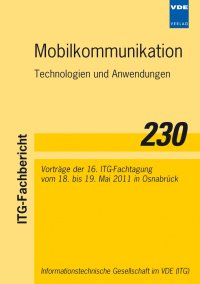Addressing Radio Resource Management Challenges in LTE-Advanced Relay Networks: Downlink Study
Conference: Mobilkommunikation 2011 - Technologien und Anwendungen - 16. ITG-Fachtagung
05/18/2011 - 05/19/2011 at Osnabrück, Deutschland
Proceedings: Mobilkommunikation 2011
Pages: 6Language: englishTyp: PDF
Personal VDE Members are entitled to a 10% discount on this title
Authors:
Bou Saleh, Abdallah; Bulakci, Ömer; Hämäläinen, Jyri (Aalto University School of Electrical Engineering, Espoo, Finland)
Bulakci, Ömer; Redana, Simone; Raaf, Bernhard (NSN Research-Radio Systems, Nokia Siemens Networks, Munich, Germany)
Abstract:
Inband Type 1 relay nodes are characterized by compact physical characteristics, low power consumption and time-multiplexed transmission and reception on their wireless backhaul and access links. The former two characteristics result in small relay cell coverage within the overlaying macro cell, which may lead to load imbalances. Whereas, the latter, i.e. realization of backhaul and access communications on different subframes, implies the need for a balance in resource partitioning among the different links which compete for resources at the eNB and proper two-hop resource allocation which ensures optimum system performance. Further challenges in relay deployments are attributed to increased interference levels in the network compared to homogeneous deployments, as well as the introduction of a new interference type known as RN-to-RN interference. The latter is due to the misalignment of reception/transmission on the access and backhaul links of different relay nodes. In this work, we review different radio resource management challenges which need to be addressed in relay deployments and discuss the performance of simple practical solutions within the LTE-Advanced framework.


